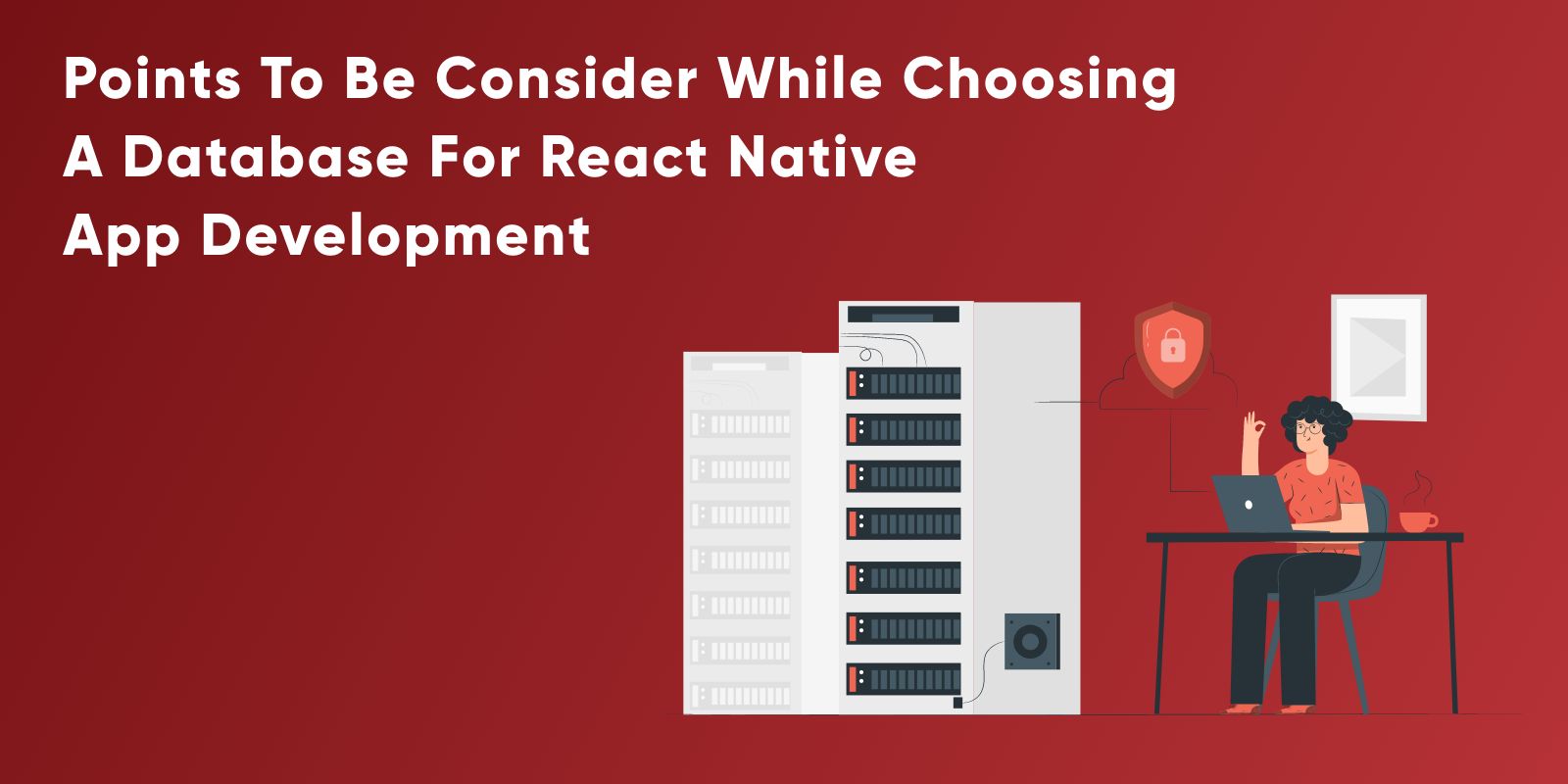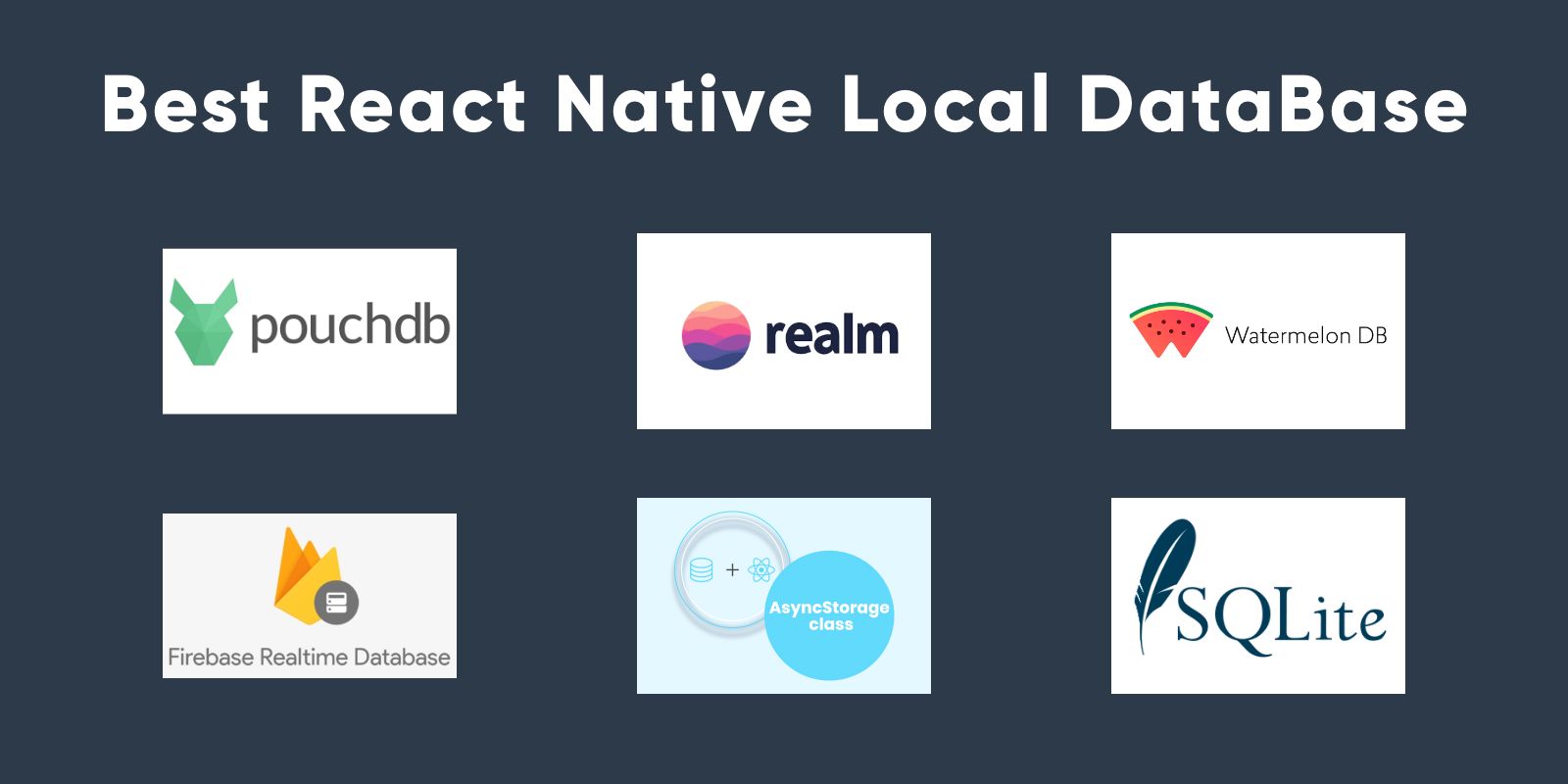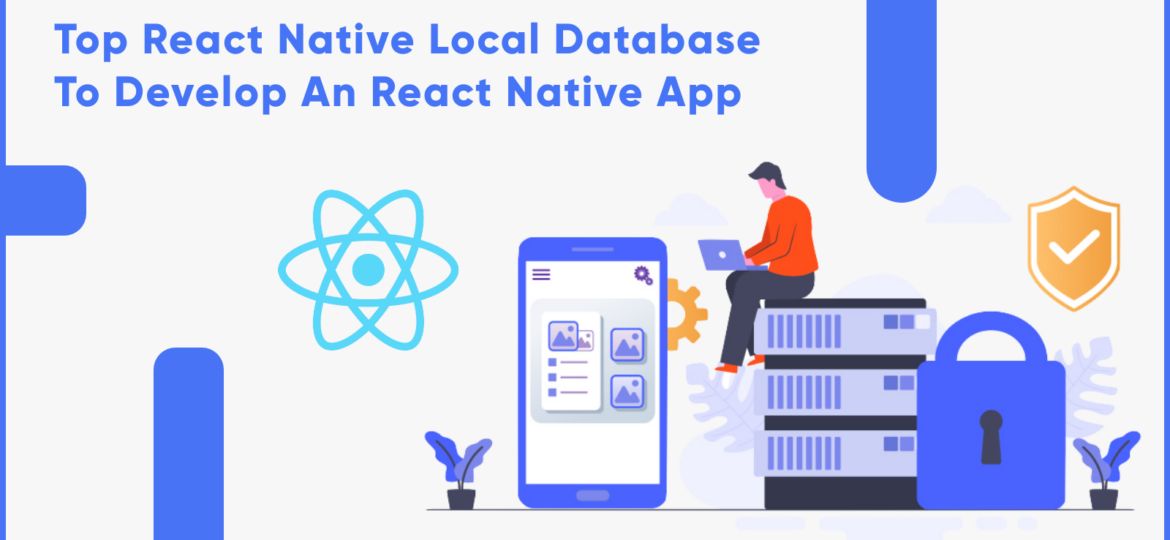Best Local Databases for React Native App Development in 2025
Mobile app performance in 2025 depends heavily on the right local database integration. Whether you’re building Android apps, iOS apps, or cross-platform React Native apps, choosing the right local database ensures fast performance, offline functionality, seamless synchronization, and secure storage. In today’s mobile-first USA market, businesses cannot afford slow or unreliable apps. That’s why selecting the best local databases for React Native app development is a critical step for both B2B and B2C success.
Why Local Databases Matter for Mobile Apps
In 2025, local databases for mobile apps are more than just storage solutions. They play a vital role in:
Offline app functionality (critical for travel, healthcare, and eCommerce apps)
Data synchronization across Android and iOS apps
Scalable storage for large user bases
Enhanced mobile performance and reduced API calls
Security and compliance with USA data privacy regulations
For businesses targeting the USA mobile app market, a well-optimized local database directly impacts SEO rankings, app retention rates, and app store visibility.
Top Local Databases for React Native Apps in 2025
1. SQLite
Still the most popular embedded local database in 2025, SQLite is lightweight, open-source, and widely used in Android and iOS apps. It’s best for apps requiring moderate data storage with offline support.
2. Realm
Owned by MongoDB, Realm is a high-performance mobile database designed for real-time synchronization and offline-first apps. It’s widely used in finance apps, healthcare apps, and enterprise solutions.
3. Firebase Realtime Database & Firestore
Google’s Firebase is a leader in 2025, offering real-time cloud sync, offline caching, and cross-platform support. It’s perfect for social media apps, messaging apps, and eCommerce platforms targeting USA users.
4. WatermelonDB
Optimized for React Native apps with complex data handling, WatermelonDB uses lazy loading and background syncing to boost mobile performance.
5. Couchbase Lite
A strong choice for enterprise mobile apps, Couchbase Lite offers edge computing, offline sync, and NoSQL support. It’s great for large-scale Android and iOS applications.
6. AsyncStorage (with MMKV for Performance)
For lightweight apps, React Native AsyncStorage combined with MMKV (by Tencent) ensures faster key-value storage and improved mobile speed optimization.
Choosing the Right Database for Your React Native App
When selecting a local database in 2025, USA developers and businesses should consider:
App size and complexity (small apps vs. enterprise apps)
Target platforms (Android apps, iOS apps, or both)
Offline-first requirements
Data security and encryption needs
Scalability for millions of users
Integration with cloud services like AWS, Firebase, or Azure
Investing in the right React Native database solution improves SEO rankings, since Google’s algorithm in 2025 rewards mobile apps with better performance, user retention, and technical reliability.
Mobile App Trends in 2025 Impacting Database Choice
AI-powered personalization requires fast and secure local storage
5G and 6G networks demand real-time sync with minimal latency
Voice search and AI assistants require databases that handle structured queries efficiently
AR/VR mobile apps need high-speed databases to manage immersive experiences
eCommerce live shopping apps rely on real-time product inventory updates
Are you looking for the right programming language for building an application? React Native is the correct choice for you to pick.
By today, React Native has become the first choice for mobile application development for most people. The organizations that are trying to build their way to enter the domain of the app are using React Native. There is huge pressure on React Native developers nowadays for developing a high-performance application that can work in the offline mode as well as can be scaled based on your requirements. But for developing such robust apps, there is a bundle of prerequisites.
So, let’s begin with one such key prerequisite i.e. React Native database the backbone of React Native applications. Without further ado, let’s quickly dive into the list of some aspects to keep in mind while choosing the React Native Database.
Points To Take Note While Choosing A Database For React Native App Development

Memory Management
The possibility of the application getting crashed increases if data is not managed in the right way. You get sufficient memory to run your application perfectly as most of the databases clear their cache in regular time intervals.
Ease Of Use
It is very essential to choose the right React Native database to integrate. This will help in minimizing the work of the app developers with ease and fastening the development process.
Offline Data Synchronization
People nowadays wish to use their application in offline mode even when the internet connection is slow/down. Therefore, it is important to integrate the database that lets data sync when the user is back online.
Data Complexity
For most of the applications, data is generally stored in the form of a JSON structure as per the analysis. So, choosing a database becomes essential here to manage complex data structures such as objects or full documents.
Concurrency
As soon as the app gains popularity, the workload on developers increases, and they have a responsibility to manage a huge amount of data. Users will be requesting many queries and serving them the right data is quite challenging. Hence, understanding the concurrency mechanism implemented by the different React Native local databases is very essential.
Which Are The Best React Native Local DataBase In 2025

PouchDB DataBase
PouchDBDatabase is an open-source Javascript database and storage of data is in JSON format. You will get access to the database with API. PouchDB allows you to create, update, delete, read, and query the object for your API.
This database is very compatible with approximately all applications as PouchDB uses HTTP protocol and JSON. When there is no internet connection, IndexedDB is used to save data.
The data gets synced to the backend servers as soon as the internet connection is back. Even with the complex data structures, this database is extremely fast. You can also use the PouchDB-authentication plugin to secure your data. Pricing: PouchDB is free of cost, but you have to pay for CouchDB if you are going with CouchDB. GitHub offers all the updates of PouchDB.
Advantages of PouchDB
- Seamlessly encrypt the local data with an AES256 level of encryption.
- Synchronization with multiple platforms
- Replication of data is like a pro.
Realm DataBase
This Database is an open-source as well as an object-oriented database that operates much faster than a relational database. Realm also supports complex data types for offline and real-time apps.
The realm database can be customized for iOS, Android, and Javascript. The realm database has its engine and also does not need object-related mapping. Multiple threads or sources are allowed to access the objects stored in the Realm Database.
For enhancing the high performance of React Native apps by managing extensive data, Realm Databases are chosen by developers. Realm has proven itself better in terms of performance in comparison to many other databases. A realm database is most suitable for the large-sized application.
Pricing: The advanced version of the realm database will cost you $1750 per month. The pro version comes with Realm studio and many more excellent features for enterprises.
Advantages of Realm
- Realm synchronization continues to run in the background to save user interaction.
- This realm database reacts native to Redux offline.
- For each mobile platform, Realm uses different encryption standards.
- It has a rich set of APIs.
Watermelon DB
The intention of developing a Watermelon database is to optimize the react-native database. On top of SQLite is watermelon database. Therefore, provides high performance to the react-native database. The Watermelon database can scale thousands of records in just a minute. Github stated that this database is optimized for building complex apps that focus on real-world performance.
Apart from that, data persistence is handled with low-end devices. You won’t be able to load any request unless it is requested at the very first position. Watermelon database has the capability of dealing with multi-thread and highly cached async operations.
Advantages of Watermelon DB
- Offline first system by syncing your engine
- Static typing with flow
- Easy plugging of data into components.
- UI will automatically re-render upon making changes in the database.
Firebase DataBase
Firebase is a Google-owned database with NoSQL. If your application is more into data synchronization and updating of data in an offline mode, then the Firebase database is the best-suited option for you.
Firebase can handle React Native apps based on MVC. Firebase database is particularly built for collaborative and multi-user apps that have huge requirements for data.
The most interesting and best thing about this database is that it comes with performance tracking tools that can help you in detecting bugs in your application. You get full access to remove the data from the Google server at any point in time. Pricing: Firebase is free to use till 1GB, after that one has to pay $25 to store data of almost 2.5GB.
Advantages of Firebase
- Sync the data across various platforms with Firebase
- Firebase caches the data on the device to provide offline access to the users.
- This database is capable of identifying the roles of users which will allow you to set controls on file.
- You can easily integrate firebase with any application.
AsyncStorage Class DataBase
AsyncStorage class database is a react-native local database that enables you to store data in the system storage. It also allows you to carry on the data between the app reboots. Since it has an in-built react native, additional deployment can be neglected.
AsyncStorage stores the objects that are also considered a string. Before storing, all values are required to be deserialized and decentralized after retrieving. It makes the process slower because serialization takes time. AsyncStorage class is not a great choice when it comes to dealing with a large amount of data. This react native database does not provide encryption for security purposes. Additionally, for offline things, it does not offer any sync. Pricing: It is free to use.
Advantages of AsyncStorage class
- In-built with React Native
- Handy whenever needed
AsyncStorage Class DataBase
- The database in the ACID compliant means it implements almost every SQL standard.
- You can enable the offline persistent in the app with the help of the react-native-SQLite-storage.
- SQLite will save the data in the cross-platform database file.
Conclusion
It is very important to make a list of the requirements first while searching for a react native database for your application. Compromising any of your needs is not the right thing to do when choosing a database for your application and also the database that you choose might be responsible for the success of your application. The best way is you can hire React Native app developers from an outstanding React native app development company. They can guide you in choosing the database for your react native app that suits you the best.
Still have queries in mind regarding the react-native database? get in touch with us now!
FAQs
What options are available for React Native Database?
There are numerous options available for the React Native local database. Let’s have a look at a few most popular and used react native databases: RealM Firebase SQLite PouchDB AsyncStorage class Watermelon DB
What factors to keep in mind while choosing a React Native Database?
Here are some essential factors to consider while choosing a perfect database:
- Complexity of data
- Ease of use
- Memory management
- Concurrency
- Sync data offline
Which are the local databases in React Native application?
The top 5 React Native local databases are:
- Watermelon DB
- Realm Database
- Firebase Database
- SQLite Database
- PouchDB Database
How do I connect a MySQL database with a React Native Android app?
To connect to the MySQL database, you need to add some code to the backend of your application. After that, your app will call the API to get the data from the MySQL server. You can use any language that you are comfortable with. Another best option is to connect with a react native app development company that will do it for you.
What are the best local databases for React Native in 2025?
The top local options include SQLite, Realm, Firebase (Realtime Database & Firestore), PouchDB, WatermelonDB, AsyncStorage (with MMKV for performance), Vasern, and Couchbase Lite, each suited for different use cases—from simple key-value storage to complex, offline-first, synchronized mobile apps.
How do I choose the right database for my React Native app?
Prioritize based on data complexity, offline sync requirements, memory and performance, ease of integration, and cost or licensing. Aim for databases that minimize boilerplate code, support background sync, and offer strong React Native mobile app performance.
Which database provides the best offline support for React Native apps?
Realm, Firebase, WatermelonDB, and PouchDB excel in offline-first scenarios, with built-in synchronization and background syncing for seamless offline functionality.
What makes Realm a strong choice for React Native local data storage?
Realm is an object-oriented, high-performance database—open-source and optimized for Android and iOS mobile apps. It supports background sync, encryption, and handles large datasets efficiently.
What about Firebase databases for React Native?
Firebase Realtime Database and Firestore are NoSQL, real-time, cross-platform databases with offline persistence, easy setup, and seamless mobile integration—great for social apps, chat, and ecommerce use cases.



